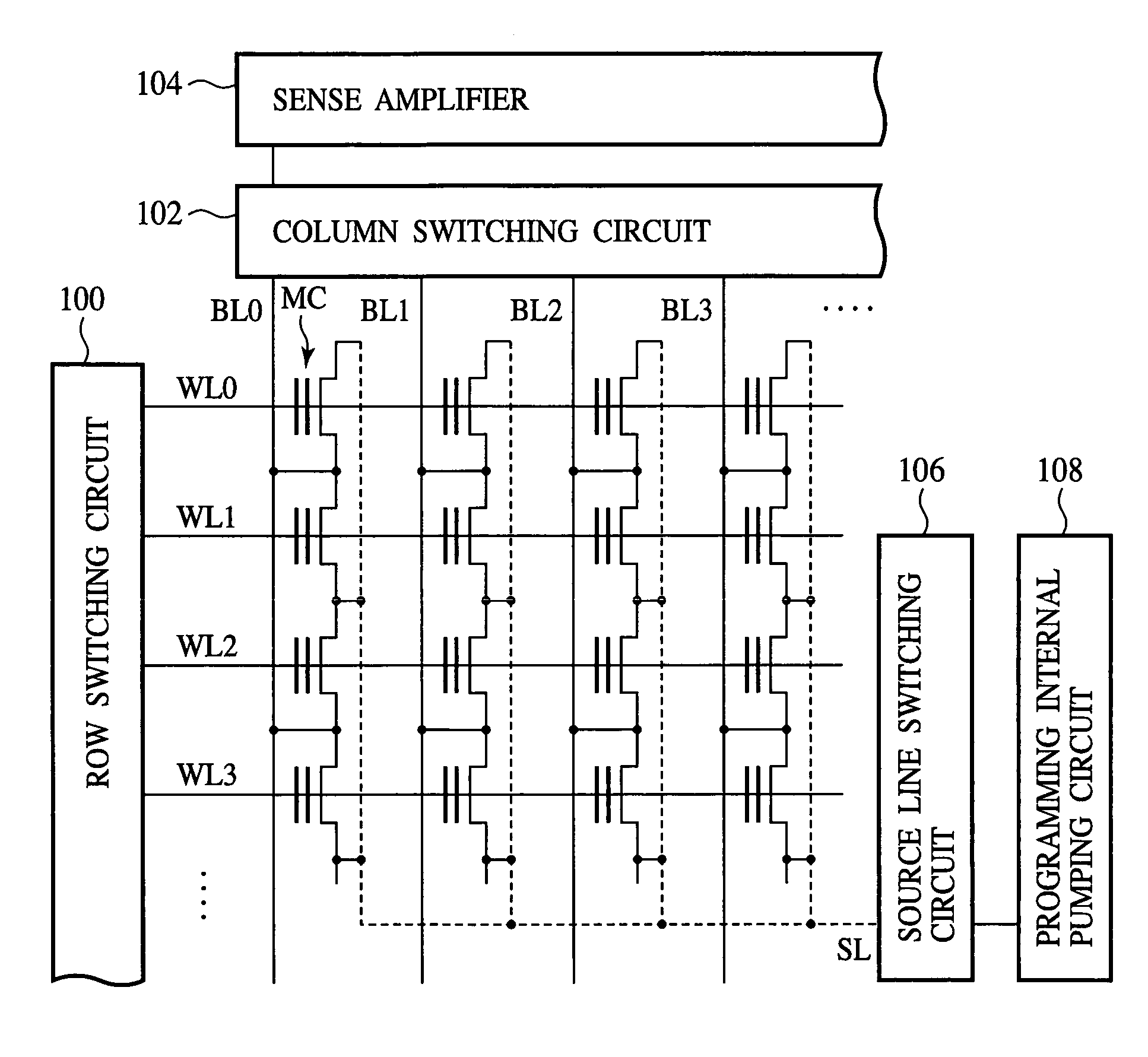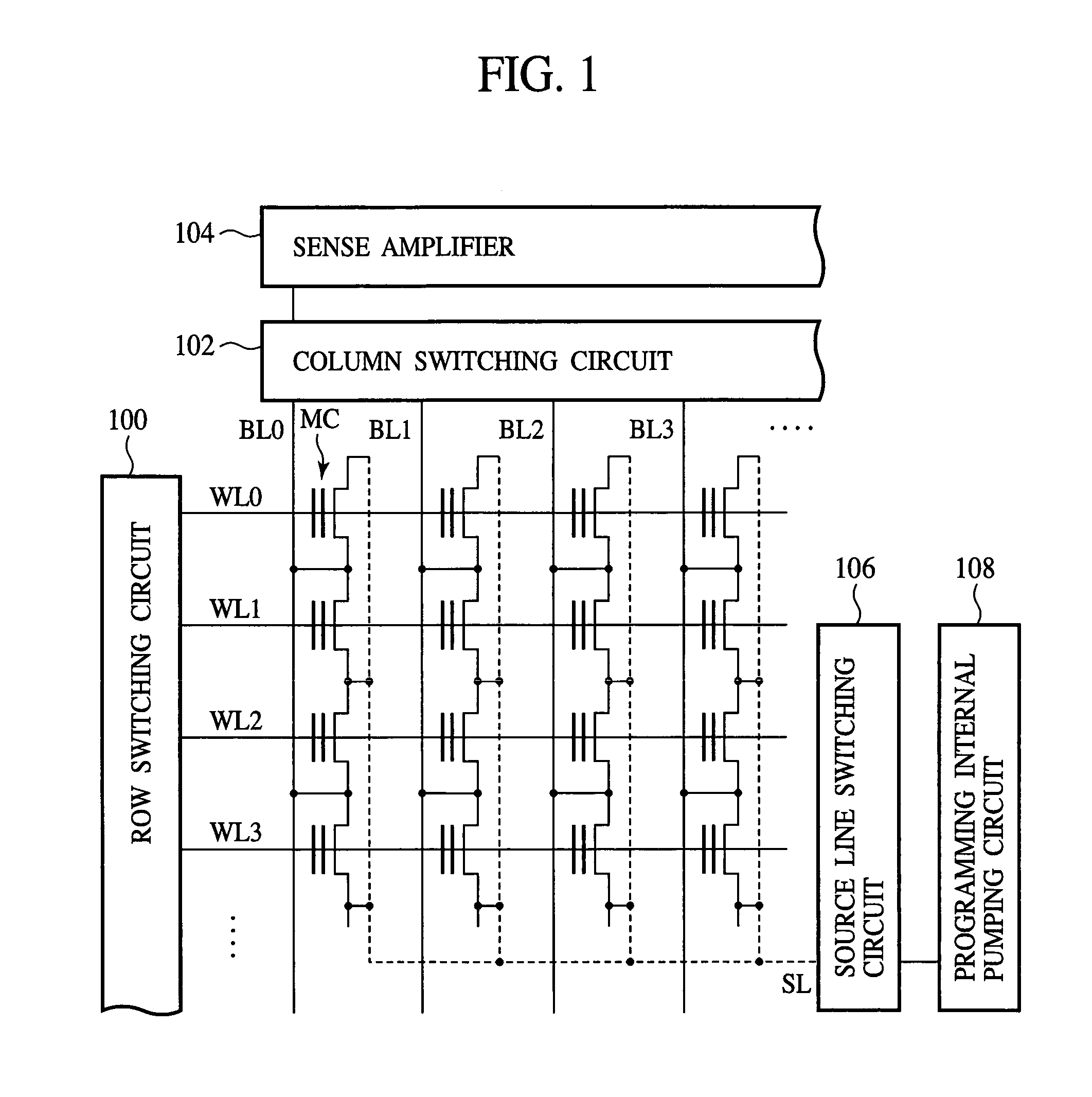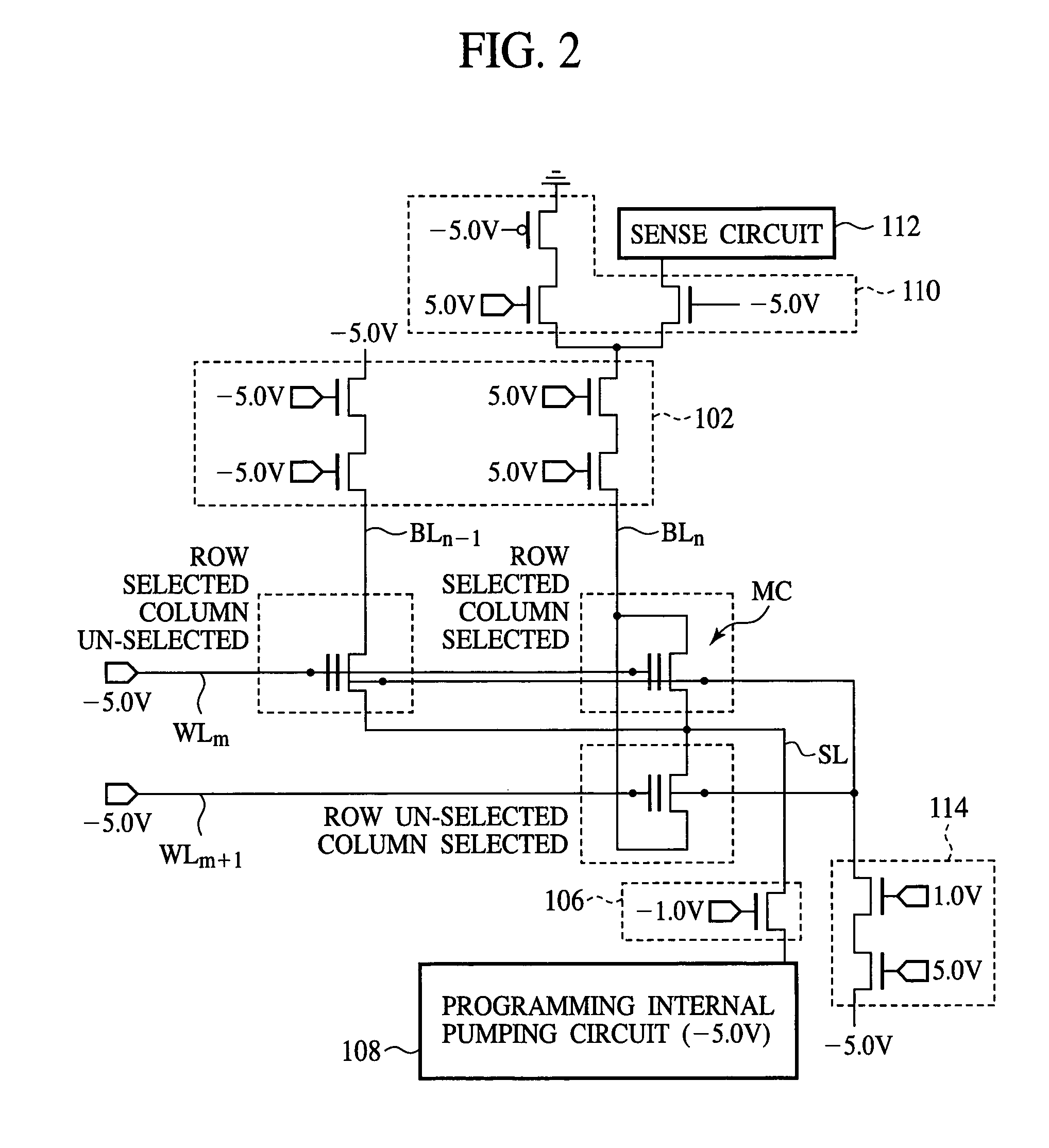Semiconductor memory device and method for writing to semiconductor memory device
a memory device and semiconductor technology, applied in static storage, digital storage, instruments, etc., can solve the problems of increasing the chip area, writing cannot, and the current supply capacity of the internal pumping circuit is limited, so as to reduce the area of the pumping capacitor of the internal pumping circuit, suppress the excess increase of source potential upon programming, and reduce the leakage current flowing in the bit line.
- Summary
- Abstract
- Description
- Claims
- Application Information
AI Technical Summary
Benefits of technology
Problems solved by technology
Method used
Image
Examples
first embodiment
A First Embodiment
[0044]The semiconductor memory device and method for writing to the semiconductor memory device according to a first embodiment of the present invention will be explained with reference to FIGS. 1 to 5.
[0045]FIG. 1 is a circuit diagram of the semiconductor memory device according to the present embodiment, which shows a structure thereof. FIG. 2 is a circuit diagram showing a method for writing to the semiconductor memory device according to the present embodiment. FIG. 3 is a view showing voltages applied to the respective terminals of the memory cell transistor for the write-back programming of the semiconductor memory device according to the present embodiment. FIG. 4 is a graph showing the transient change of the source potential and the bit line current upon executing the write-back programming. FIG. 5 is a time chart showing the method for writing to the semiconductor memory device according to the present embodiment.
[0046]First, the structure of the semicond...
second embodiment
A Second Embodiment
[0079]The semiconductor memory device and the method for writing to the semiconductor memory device according to the second embodiment of the present invention will be explained with reference to FIG. 6. The same members of the present embodiment as those of the semiconductor memory device and the method for writing to the semiconductor memory device according to the first embodiment shown in FIGS. 1 to 5 are represented by the same reference numbers not to repeat or to simplify their explanation.
[0080]FIG. 6 is a circuit diagram showing a structure of the semiconductor memory device and the method for writing to the semiconductor memory device according to the present embodiment.
[0081]The semiconductor memory device according to the present embodiment is characterized mainly in that, as shown in FIG. 6, an output voltage from the programming internal pumping circuit 108 is applied not only the source line SL, but also to the selected word line (word line WLm) via...
third embodiment
A Third Embodiment
[0088]The semiconductor memory device and the method for writing to the semiconductor memory device according to a third embodiment of the present invention will be explained with reference to FIGS. 7 and 8. The same members of the present embodiment as those of the semiconductor memory device and the method for writing to the semiconductor memory device according to the first and the second embodiments shown in FIGS. 1 to 6 are represented by the same reference numbers not to repeat or to simplify their explanation.
[0089]FIG. 7 is a circuit diagram showing a structure of the semiconductor memory device according to the present embodiment. FIG. 8 is a view showing the structure of the semiconductor memory device and the method for writing to the semiconductor memory device according to the present embodiment.
[0090]The semiconductor memory device according to the present embodiment is characterized mainly in that, as shown in FIG. 7, the source line SL is divided in...
PUM
 Login to View More
Login to View More Abstract
Description
Claims
Application Information
 Login to View More
Login to View More - R&D
- Intellectual Property
- Life Sciences
- Materials
- Tech Scout
- Unparalleled Data Quality
- Higher Quality Content
- 60% Fewer Hallucinations
Browse by: Latest US Patents, China's latest patents, Technical Efficacy Thesaurus, Application Domain, Technology Topic, Popular Technical Reports.
© 2025 PatSnap. All rights reserved.Legal|Privacy policy|Modern Slavery Act Transparency Statement|Sitemap|About US| Contact US: help@patsnap.com



